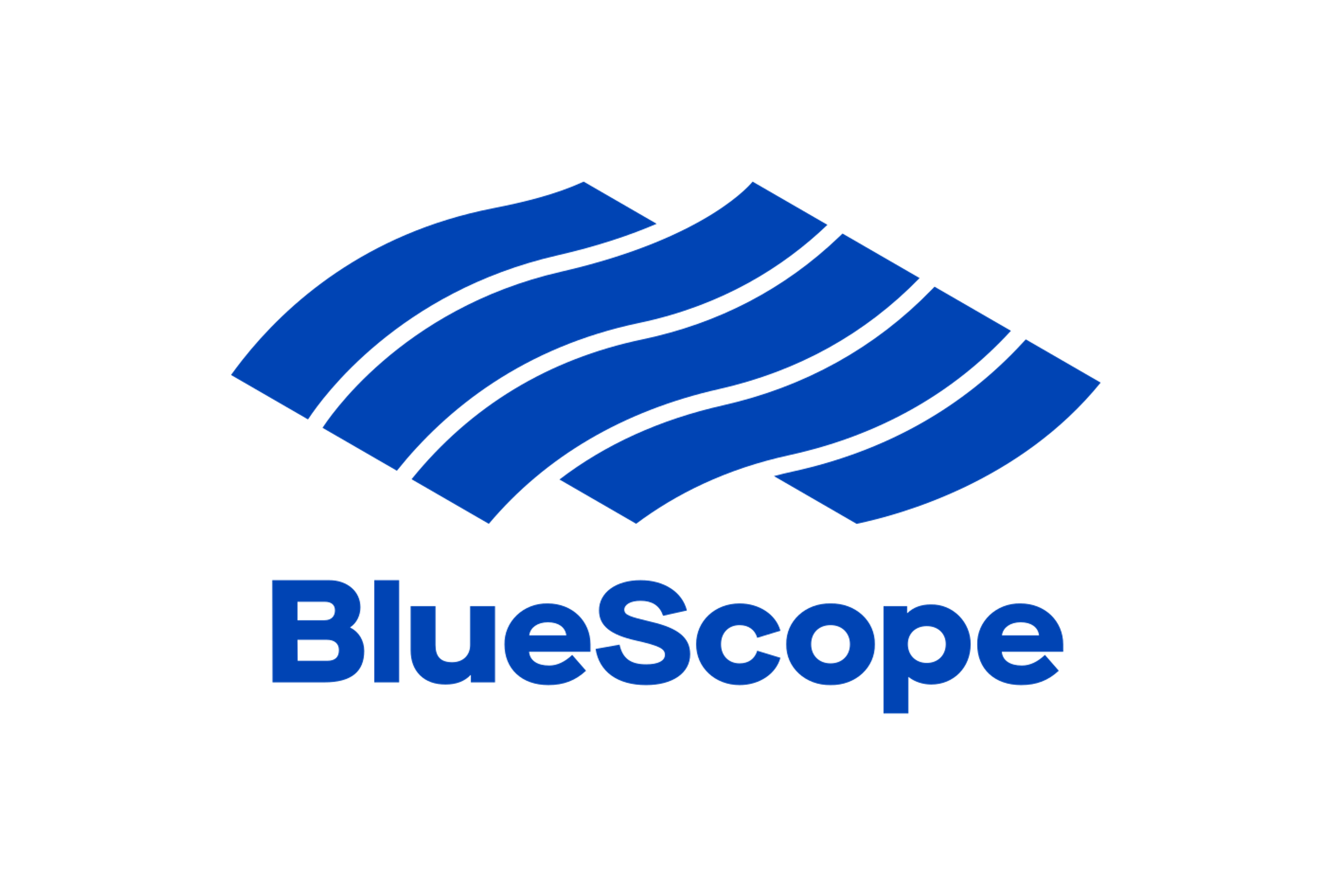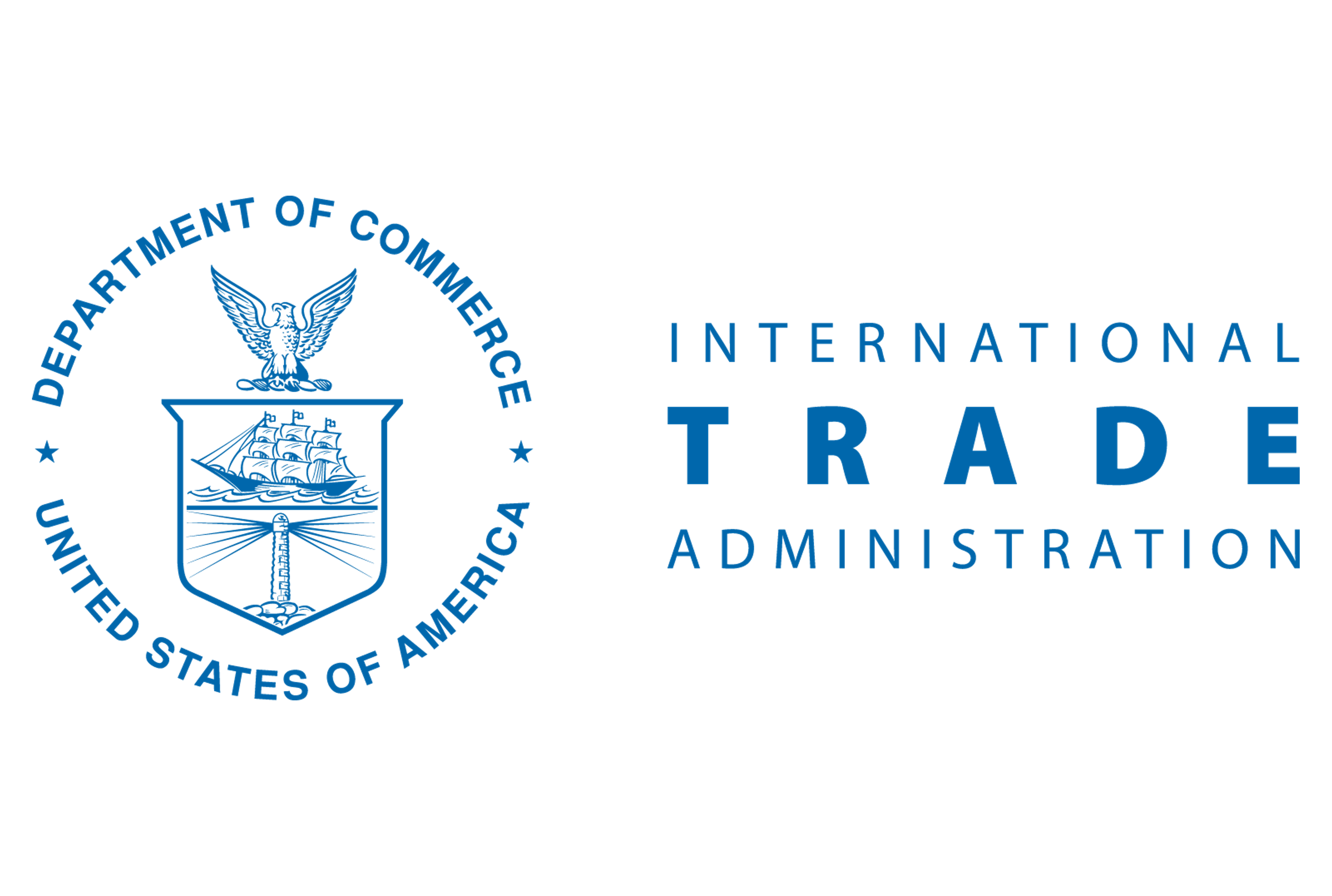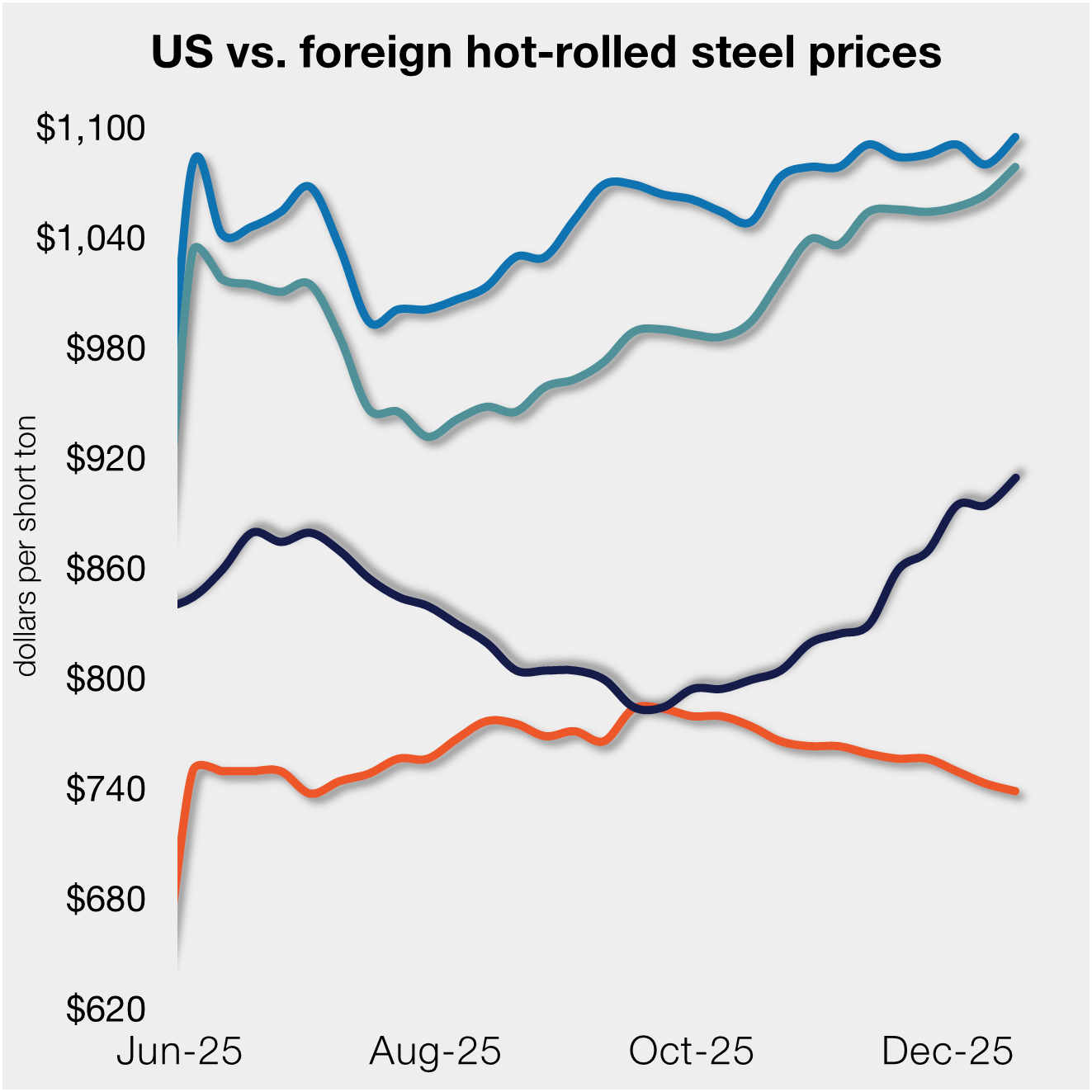Overseas
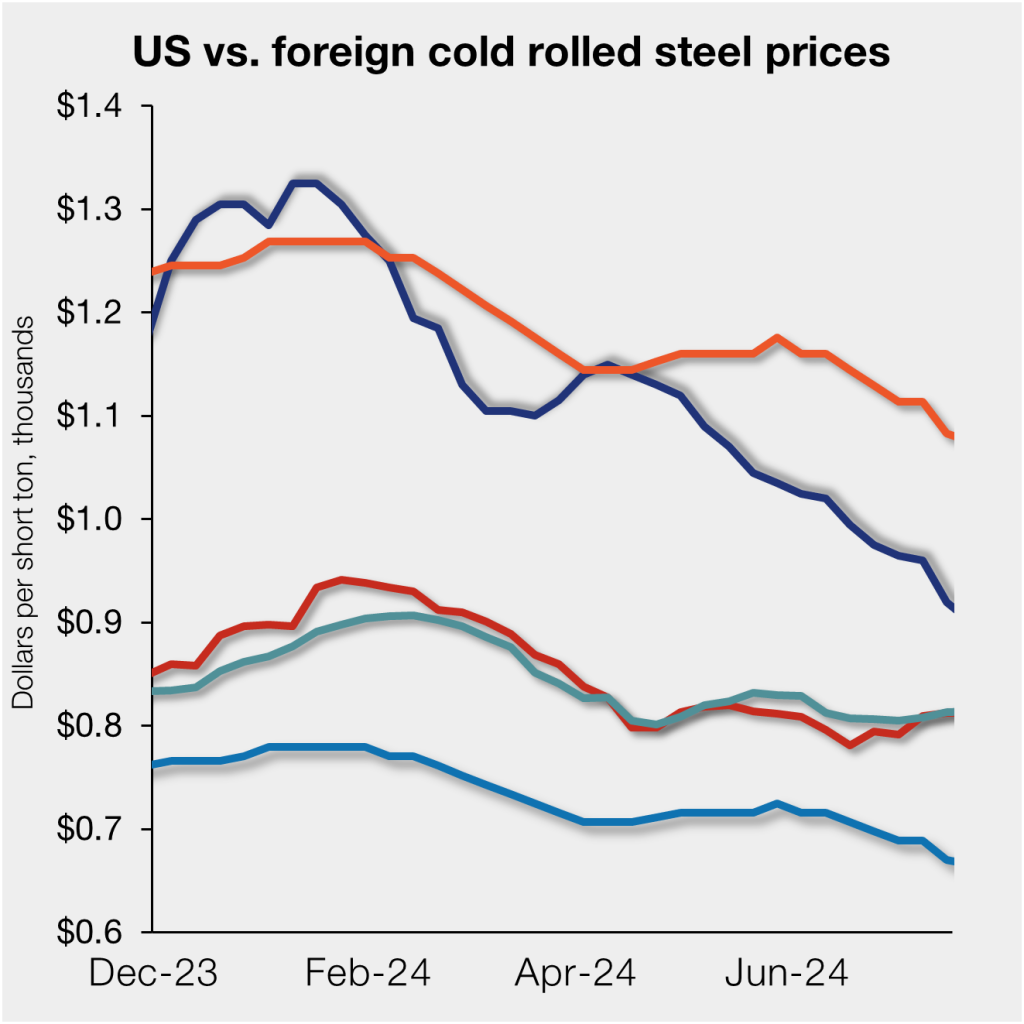
August 2, 2024
Offshore CR still cheaper despite lower US prices
Written by David Schollaert
The price gap between US cold-rolled (CR) coil and imported CR tightened marginally after falling to a 10-month low in late July.
Domestic CR coil tags remain above offshore product prices on a landed basis despite a $250-per-short-ton (st) decline in three months, and at their lowest level since last October.
US CR coil prices averaged $900/st in our check of the market on Tuesday, July 30, unchanged vs. the week before. CR tags are now down $425/st from a year-to-date high of $1,325/st in January.
Domestic CR prices are, on average, still 10.5% more expensive than imports, up marginally from 8.8% last week. While still higher than offshore product, the US CR premium is down from a 31.5% premium in early January.
In dollar-per-ton terms, US CR is now, on average, $71/st more expensive than offshore products – up from $58/st in our prior check of the market a week ago. Thanks in large part to a sharp stateside price drop, the premium is also down from a recent peak of $311/st in mid-January (Figure 1).
The charts below compare CR coil prices in the US, Germany, Italy, South Korea, and Japan. The left-hand side highlights prices over the last two years. The right-hand side zooms in to show more recent trends.
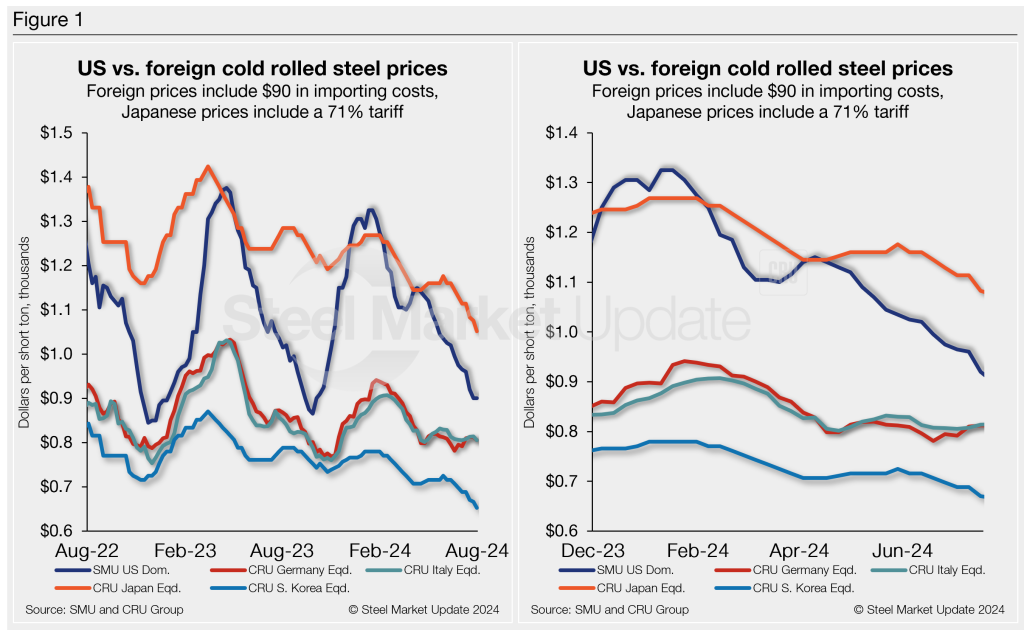
Methodology
This is how SMU calculates the theoretical spread between domestic CR prices (FOB domestic mills) and foreign CR prices (delivered to US ports): We compare SMU’s US CR weekly index to the CRU CR weekly indices for Germany, Italy, and East Asia (Japan and South Korea). This is only a theoretical calculation. Import costs can vary greatly, influencing the true market spread.
We add $90/st to all foreign prices as a rough means of accounting for freight costs, handling, and trader margin. This gives us an approximate CIF US ports price to compare to the SMU domestic CR price. Buyers should use our $90/st figure as a benchmark and adjust up or down based on their own shipping and handling costs. (Editor’s note: If you import steel and want to share your thoughts on these costs, please get in touch with the author at david@steelmarketupdate.com.)
East Asian CR coil
As of Thursday, Aug. 1, the CRU Asian CR price was $562/st, down $14/st week over week (w/w) and down $45/st over the past month. Adding a 71% anti-dumping duty (Japan, theoretical) and $90/st in estimated import costs, the delivered price to the US is $1,052/st.
The theoretical price of South Korean CR exports to the US is $652/st. The latest SMU CR average of $900/st theoretically puts US-produced CR $152/st below CR product imported from Japan. But US tags are still $248/st more expensive than CR imported from South Korea.

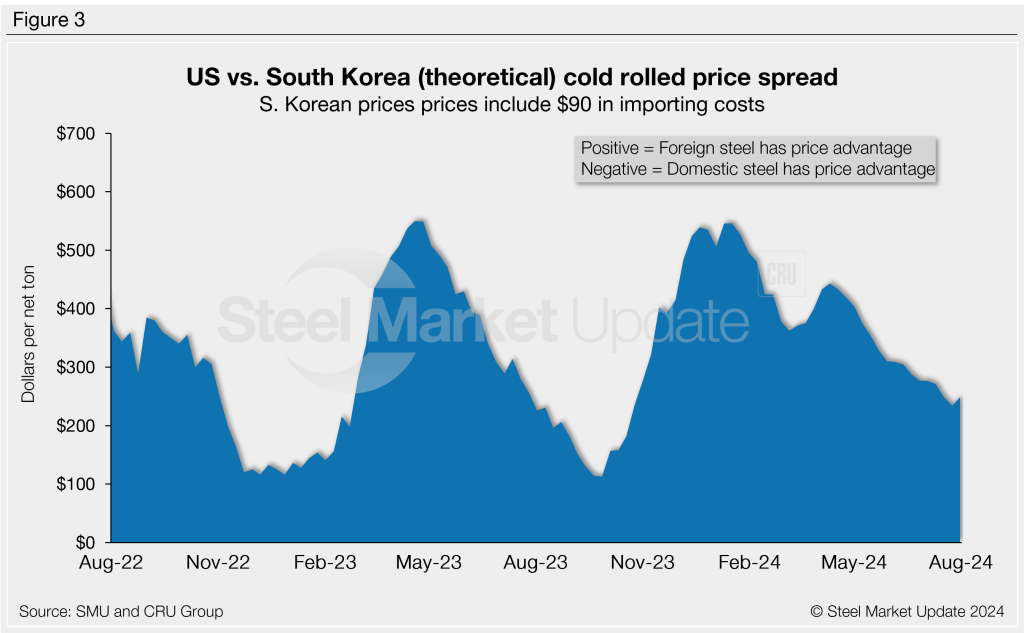
Italian CR coil
Italian CR prices were down $8/st to roughly $716/st this week. After adding import costs, the price of Italian CR delivered to the US is, in theory, $806/st.
That means domestic CR is theoretically $94/st more expensive than CR coil imported from Italy. The spread is up $8/st from last week but still $359/st below a recent high of $453/st mid-December.
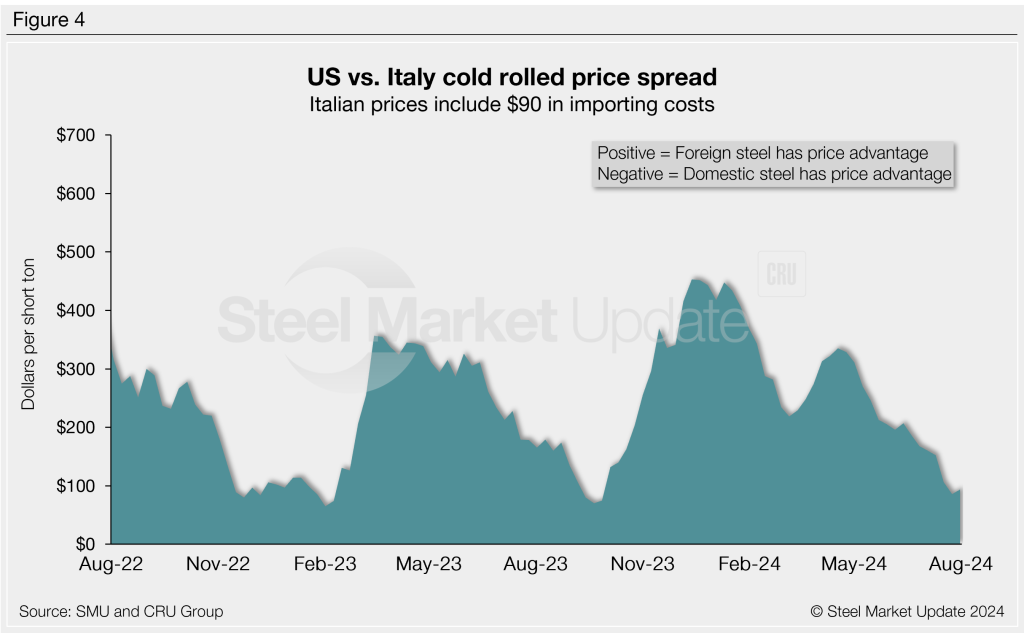
German CR coil
CRU’s German CR price drifted down $6/st. After adding import costs, the delivered price of German CR is, in theory, $806/st.
The result: Domestic CR is also theoretically $94/st more expensive than CR imported from Germany. The spread is up $6/st w/w but still well below a recent high of $431/st in the first week of 2024.
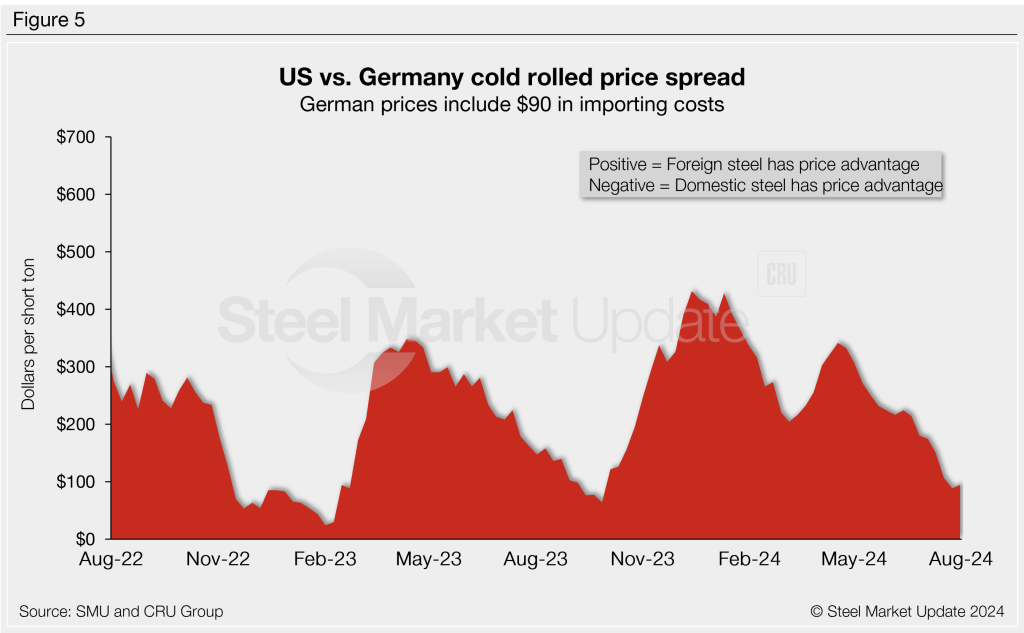
Notes: We reference domestic prices as FOB the producing mill, while foreign prices are CIF the port (Houston, NOLA, Savannah, Los Angeles, Camden, etc.). Inland freight from either a domestic mill or a port is important to keep in mind when deciding where to source from. It’s also important to factor in lead times. In most market cycles, domestic steel will deliver more quickly than foreign steel. Note also that, effective Jan. 1, 2022, the blanket 25% Section 232 tariff was removed from most imports from the European Union. It was replaced by a tariff rate quota (TRQ). Therefore, the German and Italian price comparisons in this analysis no longer include a 25% tariff. A similar TRQ with Japan went into effect on April 1, 2022. South Korea is subject to a hard quota rather than a tariff.



